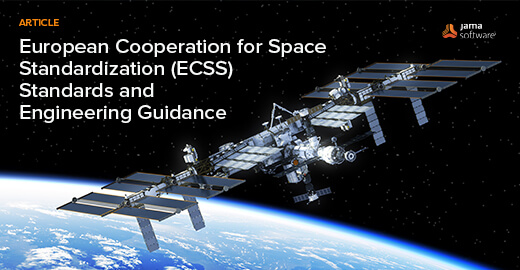European Cooperation for Space Standardization (ECSS) Standards and Engineering Guidance
The exploration of space and the development of technology have long been at the forefront of human ambition and ingenuity. As organizations in the European space sector strive to build new space systems, cooperation and standardization become vital components for success. The European Cooperation for Space Standardization (ECSS) plays a crucial role by setting standards and providing engineering guidance in Europe. In this blog post, we will delve into the significance and impact of the ECSS standards and engineering guidance on space missions.
Setting the Stage for Collaboration
The European Cooperation for Space Standardization (ECSS) initiative was established in 1993 to encourage collaboration among European space agencies, industries, and research institutions. Its primary objective is to create and maintain a consistent set of standards and engineering guidance for space-related operations. By aligning standards and technical procedures, the ECSS enhances the compatibility of systems and equipment across various European space programs, thereby improving the cross-nation development supply chain, security, and effectiveness of those space programs.
ECSS Standards: Unifying Framework
ECSS standards provide a comprehensive framework for space development, covering engineering, management, and various fields such as software engineering and testing. Adhering to these standards ensures consistent development, operation, and maintenance of space systems and missions, promoting collaboration and minimizing duplication of efforts among European space stakeholders.
RELATED: ARP4754A / ED-79A: Enhancing Safety in Aviation Development
Engineering Guidance: Navigating Complexity
In addition to the standards, the ECSS also provides engineering guidance documents that offer practical advice and insights for implementing the standards effectively. These guidance documents address specific technical topics and challenges faced by space engineers and designers. They provide detailed instructions, methodologies, and examples to aid engineers in making informed decisions and tackling complex engineering problems. The engineering guidance documents serve as valuable references, enabling engineers to navigate the intricacies of space systems design, development, and verification.
Benefits and Impact
The ECSS standards and engineering guidance have numerous benefits and far-reaching impacts on the European space sector. Firstly, they promote consistency of requirements and compatibility across European member nation space projects, facilitating cooperation and enabling the sharing of resources and knowledge. This leads to cost savings, as the reuse of proven solutions and common practices reduces development time and effort. Secondly, the standards improve quality and functional integrity by establishing rigorous requirements for design, manufacturing, and testing. By adhering to these standards, space organizations can reduce costs, improve cross-organization communication, and have a greater chance of mission success.
RELATED: Electric Transportation Startup, REGENT, Speeds Time to Market with Jama Connect®
Continuous Improvement and Evolution
The ECSS is a comprehensive resource that provides engineering guidance documents in addition to its standards. These documents offer practical insights and advice on how to implement the standards effectively, addressing specific technical topics and challenges faced by space engineers. They provide detailed methodologies, instructions, and examples to help engineers make informed decisions and tackle complex engineering problems. With these resources, engineers can navigate the intricacies of space systems design, development, and verification with confidence.
Conclusion
The European space sector benefits greatly from the ECSS standards and engineering guidance. Firstly, they promote consistency and compatibility among European space projects, facilitating cooperation and enabling the sharing of resources and knowledge. This leads to significant cost savings, as the reuse of proven solutions and common practices reduces development time and effort. Secondly, the standards enhance safety and reliability by establishing rigorous requirements for design, manufacturing, and testing. By adhering to these standards, space organizations can mitigate risks and ensure mission success with confidence.
How Can Jama Connect® Help?
Jama Connect®‘s digital engineering techniques play a vital role in supporting customers’ adherence to the ECSS space standards, ensuring compliance and fostering efficiency. Jama Connect’s model-based systems engineering capabilities provide an easy way to allow teams to view, reuse, tailor, and show traceability of space product design to the ECSS standards themselves. It acts as a crucial bridge between teams, enhancing their design and engineering processes.
Note: This article was drafted with the aid of AI. Additional content, edits for accuracy, and industry expertise by Decoteau Wilkerson and Cary Bryczek.
- [Webinar Recap] Accelerate Your ECSS Standards Compliance with Jama Connect® - February 27, 2025
- The New ARP4754B and Techniques in Jama Connect® for Airborne Systems - February 13, 2025
- [Webinar Recap] The New ARP4754B: Tips for Engineers & Quality Teams - December 30, 2024
